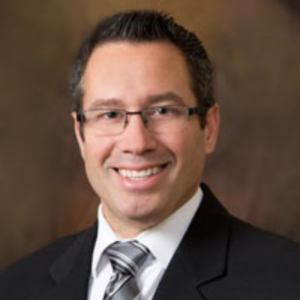New Report Highlights the Disconnect Between Perceptions Around Senior Living
The International Council on Active Aging and Age of Majority have released a unique report comparing the perspectives of professionals working in the senior industry with adults age 40 and up who are potential residents. The report, Unlocking the future: Closing the gap between consumer expectations and community offerings in senior living, highlights a significant disconnect between the perspectives of senior living managers and staff and potential residents.
Key Findings of the Report

Jeff Weiss, president and CEO at Age of Majority
Jeff Weiss, president and CEO at Age of Majority, notes that the report contained a particularly eye-opening revelation. “We knew there would be gaps between perceptions, but the size of the gaps surprised me,” he says. “When you look at the size of some of the gaps, it’s massive.” For example, 72% of staff members at retirement communities describe the communities as fun, but only 11% of active-aging consumers associate retirement communities with fun. That results in a staggering 61 percentage point difference.
Additionally, 74% of staff members describe their atmosphere as positive, but only 15% of active-aging consumers associate retirement communities with positive. While 80% of staff members associate their retirement communities with being active, just 23% of consumers agree with that association.
“Older adults have a strong pull to remain autonomous and not even think about other options,” explains Weiss. “They want to thrive at home.”
According to the report, 74% of active agers plan to stay in their homes, downsize, or upsize. Only 6% plan to move into an active 55+ community, and just 3.3% plan to live in independent or assisted living areas of a senior living community.
Take-Home Strategies for Senior Living Communities
The data reveals challenges for existing senior living communities. Weiss recommends that communities start by determining the business they are really in, including who they are targeting and serving. “Who are you competing against and why should someone choose you over one of your competitors? Senior living is a big umbrella and you should make it easy for prospects to know who you are serving,” he says.
Weiss also encourages communities to carefully consider the language they are using. “Senior is a loaded word that comes with many negative attributes and many older adults are turned off by that term,” he says.
He notes that a community’s marketing messages should emphasize their residents’ ability to control their schedules, eat when they want, choose the interesting activities they will take part in, and take advantage of the services they desire. Messages should convey a focus on residents being able to do things on their own terms.
He notes that it’s also important to focus on life and living versus caring, and to focus on things of greater importance than just a place to sleep and eat. For example, a community can focus on how it helps residents achieve their aspirations and goals.
Finally, Weiss encourages communities to open their doors and make the community a destination that prospects will want to visit. “Host community events, like bringing in relevant speakers or holding pickleball tournaments,” he says. “Health and wellness is very high priority, but family and relationships are number one. Create an environment that residents’ kids and grandchildren will want to come to.”
Weiss notes that senior care communities should monitor potential residents’ perception of their community. “When you’re taking someone on a tour, ask them what they’re looking for and what’s missing from the community,” he recommends. “Understand what wellness to means to them and how to deliver that to your prospects. Focus in on caregivers and their roles in the decision-making process, too.”
The report offers invaluable insights into the genuine perceptions around senior care. These insights hold the potential to significantly enhance the strategic decision-making and marketing efforts of senior care communities. Each section concludes with essential takeaways and opportunities for senior communities. By reviewing the report findings and engaging with potential residents about their perceptions of senior living, senior care communities can foster stronger and more authentic connections with prospective residents.

Paige Cerulli is a contributing writer to i Advance Senior Care.
Related Articles
Topics: Business Marketing Including Social Media and CRM , Featured Articles , Housing











